Royal Australian Navy has Spanish designed warships in its sights
A fleet new “Australianised” warships with “increased lethality” could become the Navy’s new weapon to defend our critical trade routes. See why.
The Royal Australian Navy might turn to Spanish designed heavily armed corvette warships with the government looking at cheaper options to defend our critical trade routes.
Defence Minister Richard Marles said Covid had shown how exposed Australia was to supply line disruptions with fuel and refinery vulnerability a national Achilles heel.
Australia has been looking at British Hunter class guided missile frigates still in design for its future needs but sources confirmed it was now considering smaller off-the-shelf options.
Australian shipbuilder Austal has announced a new consortium with engineers Civmec and Spanish shipbuilders Navantia to formally pitch a warship which is already in use by the Saudi Arabian navy.
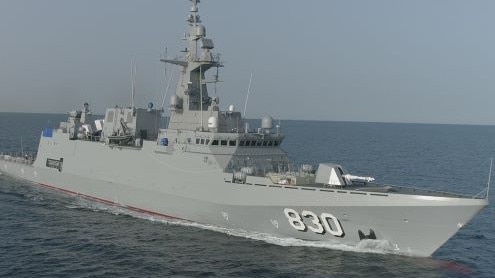
The newly created “Tasman class” fits between a large frigate and a patrol boat but is heavily armed with 16 vertical launch missile cells, four quadruple anti-ship missile launchers, two triple torpedo launchers and a host of guns.
Critically, the “Australianised” ship design is almost 70 per cent compatible with existing Navy systems.
Austal CEO Paddy Gregg said nimble, heavily armed corvettes with deep ocean capability were a viable option for Australia’s maritime needs.
He said ahead of a government decision expected early next year on the future RAN warship fleet, they’ve formally advised of a consortium and design and have builders ready to go today.
“It’s increased lethality, it’s a ship that has all of the weapons systems and radar attributes that the Australian Navy would like. (It’s) not just (an) off-the-shelf Navantia ship … we did a lot of work around making sure it’s a ship suitable for the Australian navy,” he said.
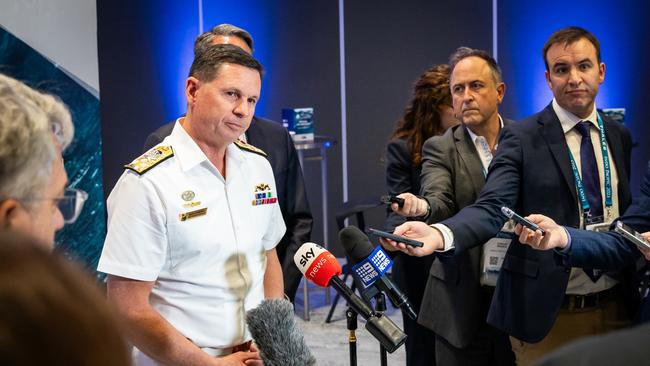
Speaking at the Indo Pacific 2023 military expo in Sydney, Navy Chief Vice Admiral Mark Hammond said he looked forward to whatever government agreed the RAN should have.
“Covid-19 highlighted supply chain vulnerabilities globally and for Australia in particular it highlighted our maritime trade vulnerabilities which we know could be exploited in a conflict,” he said.
“To name a few – Australia’s reliance on importing most of our consumables, a lack of a strategic shipping fleet, lack of oil reserves and having capacity to protect our offshore and undersea infrastructure.”
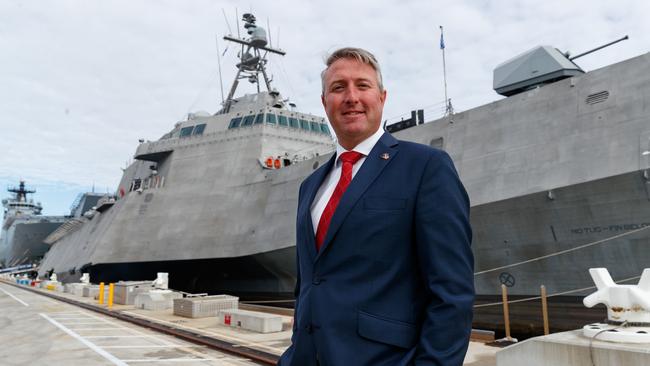
Defence Minister Richard Marles agreed and said in 1990 most liquid fuels used in Australia were based on refined crude oil derived from local waters, largely Bass Strait and the North West Shelf.
“Today, there are two refineries left, most of our liquid fuel that we use comes in imported, refined product, most of which comes from one country and that’s Singapore, but we receive a bit from Indonesia as well, and other places. Of the two refineries that are doing refining, about half of what they refine is imported crude oil from the Middle East. So right there we are hugely exposed in terms of the way in which we are connected to the world,” he said.
He said Australia needed a stronger maritime force, and that would come from nuclear-powered submarines and the yet to be revealed new surface ship fleet.
WHY SUBS MUST COUNTER CHINA'S AGGRESSION
Building nuclear-powered submarines in Australia was critical to Pacific security as China ramps up “aggression” toward US ships and the Royal Australian Navy, the region’s top admiral has warned.
US Pacific Fleet commander Admiral Sam Paparo said since 2021 there had been more than 300 “aggressive and coercive” manoeuvres from Chinese ships around the aircraft and vessels of the US and its allies, including Australia.
In a pointed no-nonsense interview, Adm Paparo said the Chinese were on an unprecedented naval build-up and the US and allies were right to seek combined strength in pacts like AUKUS.
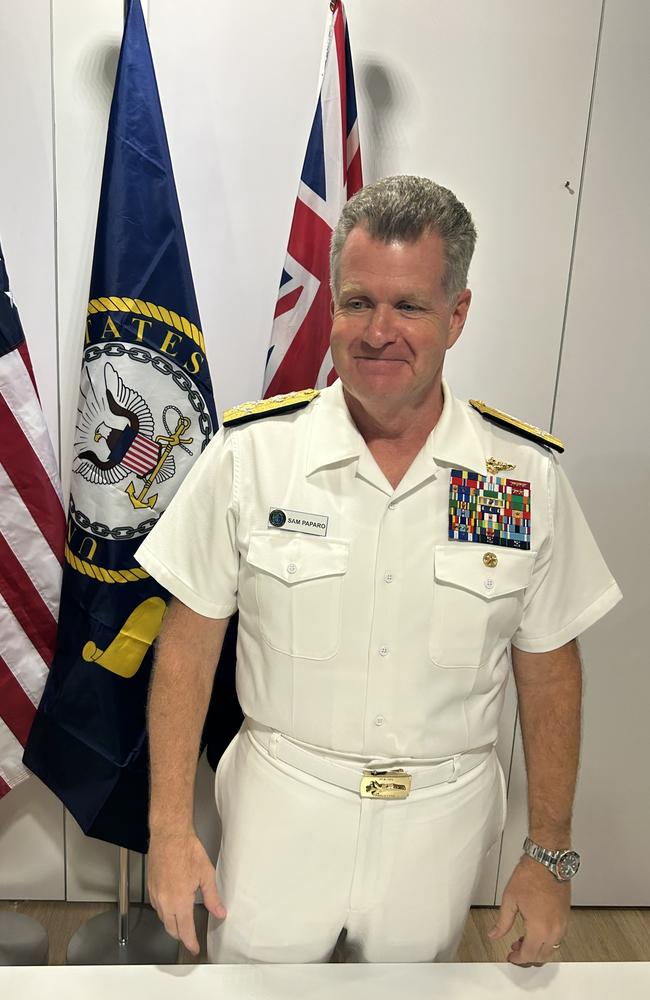
Adm Paparo said this was particularly the case since Chinese leader Xi Jinping publicly announced he had tasked his forces to to be ready to effect unification by force with Taiwan by 2027.
He said the timeline was a helpful “guide” but it could happen before or after that year – and in the meantime aggressive Chinese posturing of international sea trade lanes would continue.
“The arc (of aggression) has been steep. They are increasingly provocative and it’s deeply concerning; at times they’ve hazarded themselves and hazarded people in vessels and aircraft they’ve interacted with,” said Adm Paparo, who commands the largest fleet in the world with more than 250,000 sailors and marines, 200 ships and 2000 aircraft.
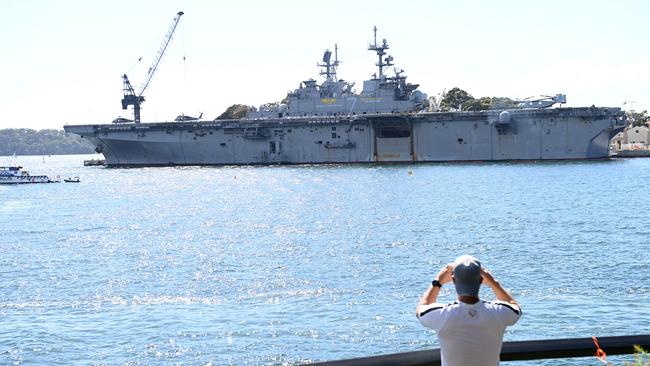
“I believe they are being directed to be more aggressive and they have followed those orders. The PRC [People’s Republic of China] are pressing unlawful claims with no basis in international law or custom and operating under the logic of military power. they want to create tense and uncomfortable situations in the hope that US and partner forces will vacate the space every force has a right to be in.”
That space includes the South China Sea and the Indian Ocean.
Adm Paparo, attending the Indo Pacific 2023 international maritime military expo in Sydney, said Australia had faced “unsafe” PRC military behaviour which had been particularly more aggressive toward countries with smaller militaries.
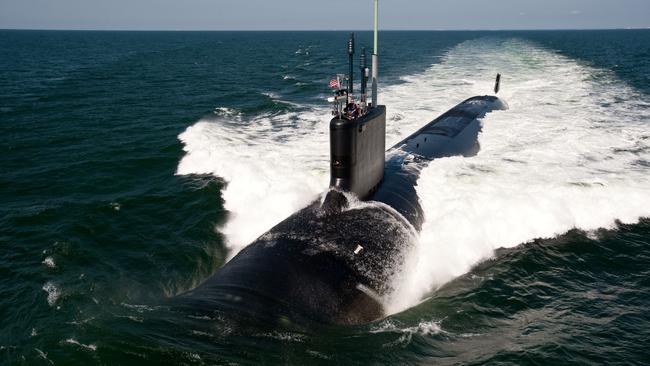
The RAN has previously confirmed it had no navy-to-navy relationship with China but would not say why.
While Australia could buy off-the-shelf US or UK nuclear-powered submarines for its defence, Adm Paparo said it was critical the nation built its own.
“It (building in Adelaide) is an essential part of AUKUS because the essence of AUKUS itself is the combination of the talents of Australian, United Kingdom and the United States that brings all of the energy of the young people and industrial capability. We are pooling talents, we are pooling resources and we are locking our futures together as three nations, so accordingly I think to the extent AUKUS increases the net industrial base of the three countries, it increases the net combat capability of all three countries together.
The American admiral had earlier visited HMAS Stirling in WA and confirmed rotational postings there of US assets including submarines and ships would be integrated with Australian sovereign forces.
More Coverage
Originally published as Royal Australian Navy has Spanish designed warships in its sights




